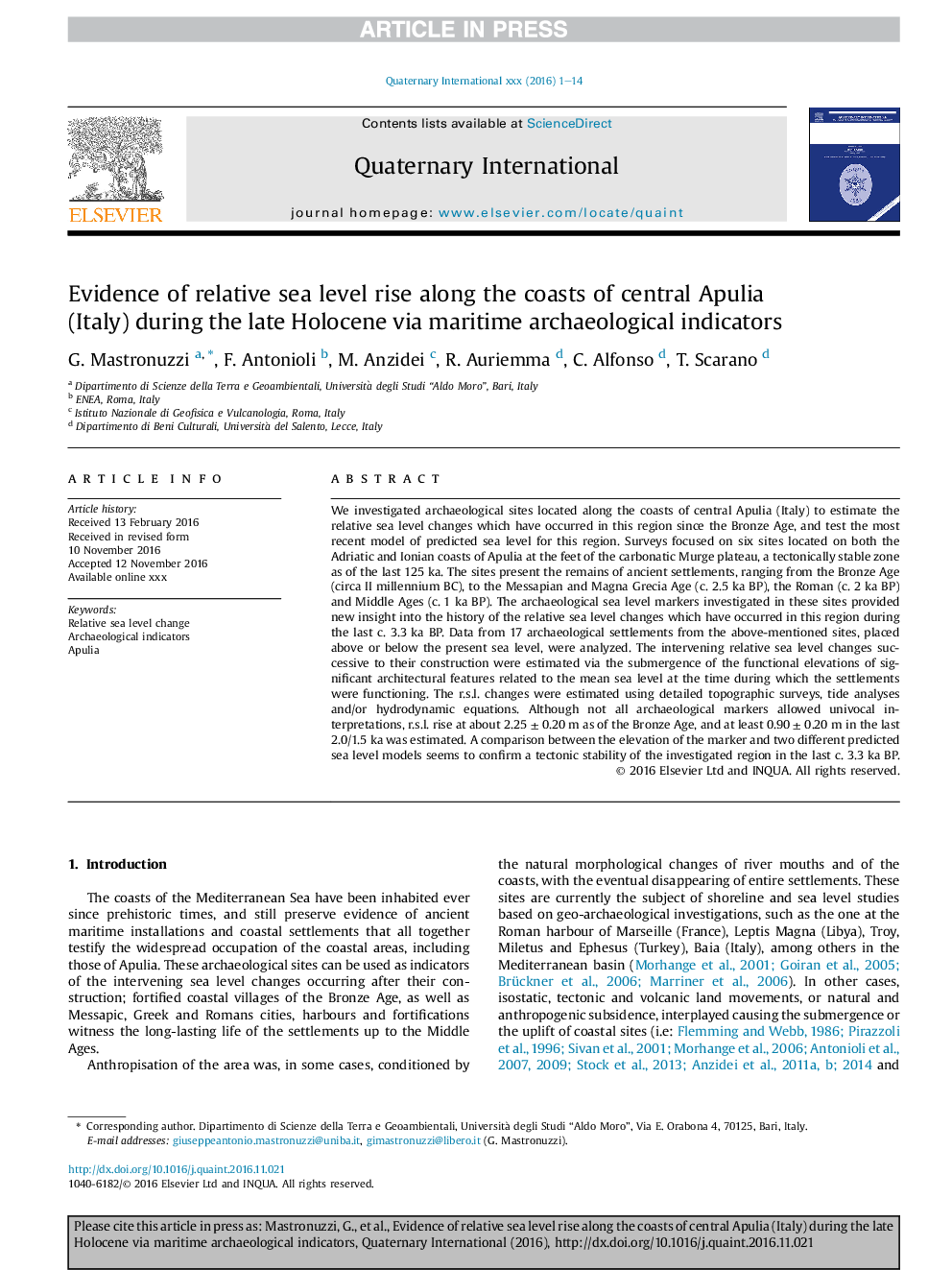| Article ID | Journal | Published Year | Pages | File Type |
|---|---|---|---|---|
| 5113177 | Quaternary International | 2017 | 14 Pages |
Abstract
We investigated archaeological sites located along the coasts of central Apulia (Italy) to estimate the relative sea level changes which have occurred in this region since the Bronze Age, and test the most recent model of predicted sea level for this region. Surveys focused on six sites located on both the Adriatic and Ionian coasts of Apulia at the feet of the carbonatic Murge plateau, a tectonically stable zone as of the last 125 ka. The sites present the remains of ancient settlements, ranging from the Bronze Age (circa II millennium BC), to the Messapian and Magna Grecia Age (c. 2.5 ka BP), the Roman (c. 2 ka BP) and Middle Ages (c. 1 ka BP). The archaeological sea level markers investigated in these sites provided new insight into the history of the relative sea level changes which have occurred in this region during the last c. 3.3 ka BP. Data from 17 archaeological settlements from the above-mentioned sites, placed above or below the present sea level, were analyzed. The intervening relative sea level changes successive to their construction were estimated via the submergence of the functional elevations of significant architectural features related to the mean sea level at the time during which the settlements were functioning. The r.s.l. changes were estimated using detailed topographic surveys, tide analyses and/or hydrodynamic equations. Although not all archaeological markers allowed univocal interpretations, r.s.l. rise at about 2.25 ± 0.20 m as of the Bronze Age, and at least 0.90 ± 0.20 m in the last 2.0/1.5 ka was estimated. A comparison between the elevation of the marker and two different predicted sea level models seems to confirm a tectonic stability of the investigated region in the last c. 3.3 ka BP.
Keywords
Related Topics
Physical Sciences and Engineering
Earth and Planetary Sciences
Geology
Authors
G. Mastronuzzi, F. Antonioli, M. Anzidei, R. Auriemma, C. Alfonso, T. Scarano,
